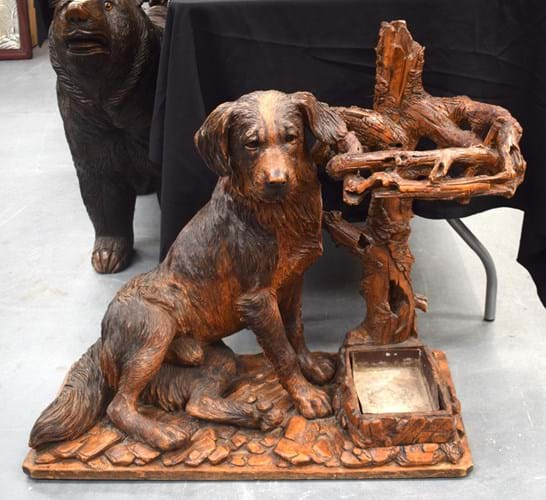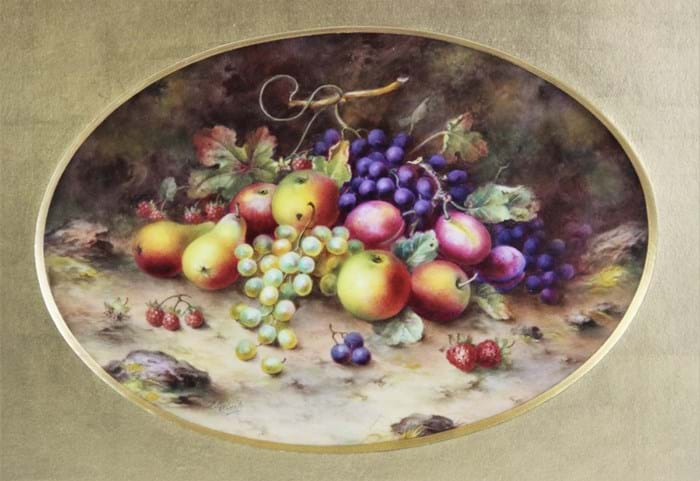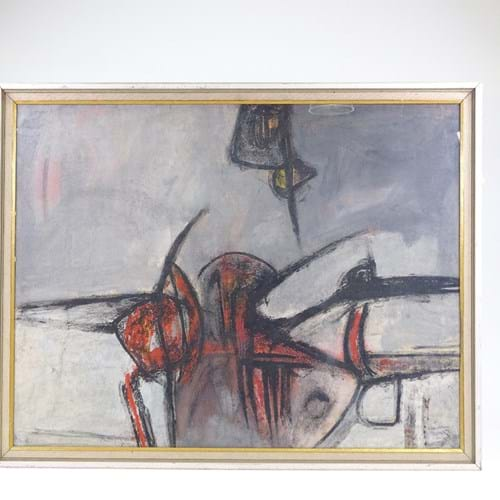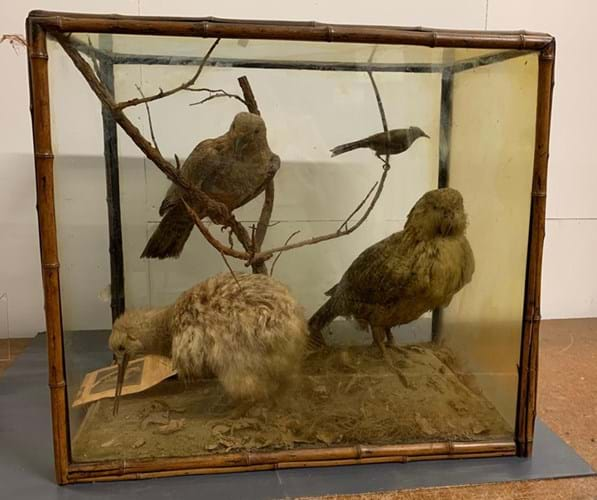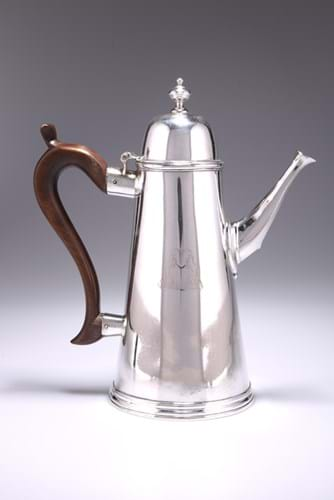1. Black Forest stick stand
So-called ‘Black Forest’ carvings don’t get much better than this walking stick stand (above) modelled as a seated hound next to a tree stump offered by Hannams in Selborne, Hampshire on August 17. Pieces such as this have long been associated with the Black Forest region but more properly were created in Brienz, Switzerland where a cottage industry supporting hundreds of wood carvers thrived well into the 20th century. Baedeker's Travel Guide of the period describes the town as having a population of 2400, of whom 600 persons were employed as woodcarvers, to supply the upper-class tourist trade to Switzerland with mementos of the Grand tour.
This beautifully carved maple stick stand c.1890 is in the manner of Walter Mäder and his son Heinrich, master carvers who specialised in detailed renditions of Swiss mountain dogs. Their rarest and most desirable pieces are near life-size subjects such as this. Estimated at £2000-3000, it sold for £14,000.
2. Royal Worcester plaques
In the hierarchy of Royal Worcester fruit painters Frank Roberts (1857-1920) comes close to the top. Starting work at the factory as a boy in 1872 he was part of the first generation of artists who, working on a piece-rate, specialised in painting bountiful still lives of the local agricultural produce on porcelain blanks.
A good idea of his talents was provided by the fine pair of plaques offered by Trevanion & Dean in Whitchurch, Shropshire on August 22.
Measuring 18in (45cm) across in matching gilt glazed frames, these had puce factory marks with date dots for 1920 (visible verso through a cut-out panel), suggested they were among the last pieces Roberts’ painted. Prices for similar pieces have dipped in the past decade but this duo provided something of a trip down memory lane when selling for £7600 (estimate £600-1000).
3. Guyanese artist oil paintings
Two oils by the Guyanese artist Aubrey Williams (1926-90), a key figure in London’s Caribbean Artists Movement, emerged for sale at Burstow & Hewett in Battle on August 20. Rainsong, pictured here and a second unframed canvas titled verso Cataleya were both signed and dated 1962 when Williams was finding most success. He had held solo exhibitions at the New Vision Gallery in 1959 and 1960 while in 1963, 40 of his paintings were exhibited in the Commonwealth Biennale of Abstract Art at the Commonwealth Institute.
Both Sussex works are typical of Williams’ work of this period that combines elements of the prevailing Abstract Expressionism plus the forms, images and symbols of the pre-Columbian culture he encountered while working among the Warao people of north-west Guyana. Many similar oils formed part of the Aubrey Williams exhibition held at London’s October Gallery in 2018.
Estimated at £500-800 each, Rainsong sold at £7500 and Cataleya £7000. Both pictures sold to a buyer via thesaleroom.com.
4. Taxidermy of New Zealand birds
A Victorian taxidermy case of four New Zealand birds by Rowland Ward of Piccadilly sold for an unexpected £7000 (estimate £100-200) at Windsor Auctions in Berkshire on August 22.
The subject matter is sadly very scarce.
Alongside the tui, a Northern brown kiwi and the kea this mount includes a kakapo, the large flightless ground-dwelling parrot first described by the English ornithologist George Robert Gray in 1845. Conservation efforts to save the Kakapo began as early as the 1890s but today it remains critically endangered with a total known adult population of around 200.
Alongside the trophies of big game hunting, cases of birds from the various dominions of the British empire were part of Rowland Ward’s stock in trade in the late 19th century. Similar cases of New Zealand ornithology reside in a number of museums and public collections – including large examples by Ward at the Horniman Museum in London’s Forest Hill and at Clandon Park, Surrey.
5. George I silver coffee pot
This George I provincial silver coffee pot c.1720, offered by Elstob & Elstob in Ripon on August 20, is a great rarity. In addition to the mark Sterling, it is struck twice BB for Benjamin Brancker (d.1734) who is known to have been working in Liverpool from the early years of the 18th century. The crest is for Thomas Willis, a Liverpool merchant, who in 1684 purchased the estate of Halsnead Park in Cronton.
Another Brancker coffee pot of this ‘lighthouse’ form, with a similarly distinctive faceted spout, is in the Liverpool Museum.
This piece has a recent saleroom history. When sold on behalf of the D'Anyers Willis Will Trust in Christie's South Kensington on September 2004 it had taken £19,500 (£23,300 including premium) but that price had plunged to a low estimate £5000 (£6250 including premium) when it reappeared as part of the Sotheby’s sale SJ Phillips: A Bond Street Legacy in 2017.
This time in North Yorkshire it found a buyer at the lower end of the £7000-9000 guide.


